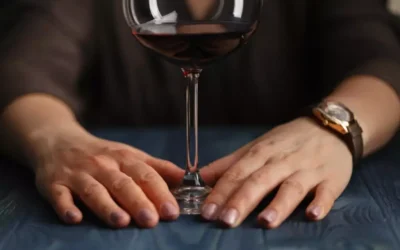Sober living
The Effects of Drinking Goal on Treatment Outcome for Alcoholism PMC
By 1989, treatment center referrals accounted for 40% of new AA memberships (Mäkelä et al., 1996). This standard persisted in SUD treatment even as strong evidence emerged that a minority of individuals who receive 12-Step treatment achieve and maintain long-term abstinence (e.g., Project MATCH Research Group, 1998). The position of ALCOHOLICS ANONYMOUS (AA) and the dominant view among therapists who treat alcoholism in the United States is that the goal of treatment for those who have been dependent on alcohol is total, complete, and permanent abstinence from alcohol (and, often, other intoxicating substances). By extension, for all those treated for alcohol abuse, including those with no dependence symptoms, moderation of drinking (termed controlled drinking or CD) as a goal of treatment is rejected (Peele, 1992). Instead, providers claim, holding out such a goal to an alcoholic is detrimental, fostering a continuation of denial and delaying the alcoholic’s need to accept the reality that he or she can never drink in moderation. Earlier research utilizing drug use goals analogous to goals used in the present study found commitment to absolute abstinence, measured at the end of treatment, to predict days to relapse across nicotine, alcohol, and opiate dependence (Hall & Havassy, 1986; Hall, Havassy, & Wasserman, 1990).
How to Control Your Alcohol Intake – Verywell Mind
How to Control Your Alcohol Intake.
Posted: Mon, 29 Aug 2022 07:00:00 GMT [source]
Repeated Measures Latent Class Models of Weekly Drinking During Treatment
- 12-step programs alone do not usually address the underlying need that’s been suppressed through alcohol.
- Similarly, make sure the drinks you are counting are standard sizes (12 ounces of regular beer, 5 ounces of wine, or 1.5 ounces of distilled spirits).
- Despite compatibility with harm reduction in established SUD treatment models such as MI and RP, there is a dearth of evidence testing these as standalone treatments for helping patients achieve nonabstinence goals; this is especially true regarding DUD (vs. AUD).
- However, the current study showed that Class 6 had better drinking outcomes at three years following treatment than Class 5.
- Polich, Armor, and Braiker found that the most severely dependent alcoholics (11 or more dependence symptoms on admission) were the least likely to achieve nonproblem drinking at 4 years.
In addition to evaluating nonabstinence treatments specifically, researchers could help move the field forward by increased attention to nonabstinence goals more broadly. For example, all studies with SUD populations could include brief questionnaires assessing short-and long-term substance use goals, and treatment researchers could report the extent to which nonabstinence goals are honored or permitted in their study interventions and contexts, regardless of treatment type. There is also a need for updated research examining standards of practice in community SUD treatment, including acceptance of non-abstinence goals and facility policies such as administrative discharge. Multiple theories of motivation for behavior change support the importance of self-selection of goals in SUD treatment (Sobell et al., 1992).
How to Get Help for Drug or Alcohol Misuse
However, this single drinking event cutoff for “success or failure” lacks validity (Pearson, Kirouac, & Witkiewitz, 2016) and is not a good cutoff for delineating functioning following treatment (Wilson, Bravo, Pearson, & Witkiewitz, 2016). When considered as an entire sample of 84 individuals, participants evidenced significant reductions in all three outcomes over the 7 week intervention period (total drinks, drinking days, and drinks per drinking day). Interestingly, analyses https://ecosoberhouse.com/ conducted after the main analyses to explore and learn more about the findings (i.e., “post-hoc” analyses) categorized individuals just according to their motivation to reduce heavy drinking and to abstain from alcohol; here the groups were not different in terms of their treatment response. Additionally, given the nature of the COMBINE study, the effects of a medically oriented intervention (i.e., MM) without a pharmacological component could not be investigated.
3 Stepwise regressions: Non-abstinence
Severity of alcoholism is the most generally accepted clinical indicator of the appropriateness of CD therapy (Rosenberg, 1993). Untreated alcohol abusers probably have less severe drinking problems than clinical populations of alcoholics, which may explain their higher levels of controlled drinking. But the less severe problem drinkers uncovered in nonclinical studies are more typical, outnumbering those who “show major symptoms of alcohol dependence” by about four to one (Skinner, 1990). Demographics, baseline dependence severity (as measured by the Alcohol Dependence Scale (Skinner & Horn, 1984)), and treatment condition by latent classes are presented in Table 3.
- The majority of people I ask this question to will say no, it is never one or two, it always leads onto more.
- However, it is also possible that adaptations will be needed for individuals with nonabstinence goals (e.g., additional support with goal setting and monitoring drug use; ongoing care to support maintenance goals), and currently there is a dearth of research in this area.
- At the first interview all IPs were abstinent and had a positive view on the 12-step treatment, although a few described a cherry-picking attitude.
- This strategy is not about total abstinence but involves setting moderate drinking goals that are safe and sensible for you, paying attention to social influences that may sway your decisions, and developing self-awareness around your triggers.
- In 1990, Marlatt was introduced to the philosophy of harm reduction during a trip to the Netherlands (Marlatt, 1998).
In Britain and other European and Commonwealth countries, controlled-drinking therapy is widely available (Rosenberg et al., 1992). The following six questions explore the value, prevalence, and clinical impact of controlled drinking vs. abstinence outcomes in alcoholism treatment; they are intended to argue the case for controlled drinking as a reasonable and realistic goal. As authors point out, all groups improved to varying degrees controlled drinking vs abstinence particularly in terms of fewer drinks per drinking day, despite the fact that new skills to reduce or abstain were not an explicit part of any of the three treatments in the initial randomized trial. These individuals may be naturally finding ways in their environment to help them reduce or abstain (e.g., seeking social support), for example, or automatically using cognitive strategies to help them stick to limits on days they drink.
Days to Relapse to Heavy Drinking
Whether you’re considering moderation or complete abstinence, this article will provide information about how to begin an Alcohol Moderation Management (AMM), its effectiveness, potential drawbacks, and its applicability to people dealing with alcoholism. Nonabstinence approaches to SUD treatment have a complex and contentious history, and significant social and political barriers have impeded research and implementation of alternatives to abstinence-focused treatment. We summarize historical factors relevant to non-abstinence treatment development to illuminate reasons these approaches are understudied.


Replace Alcohol





